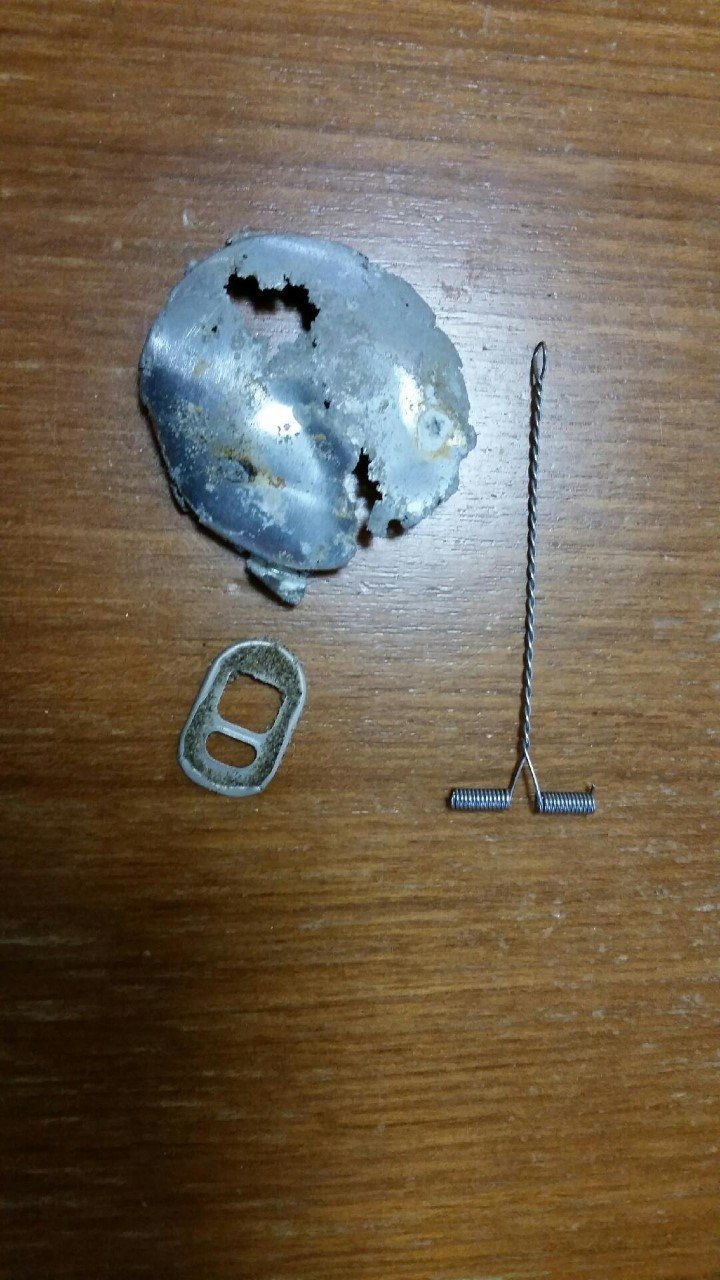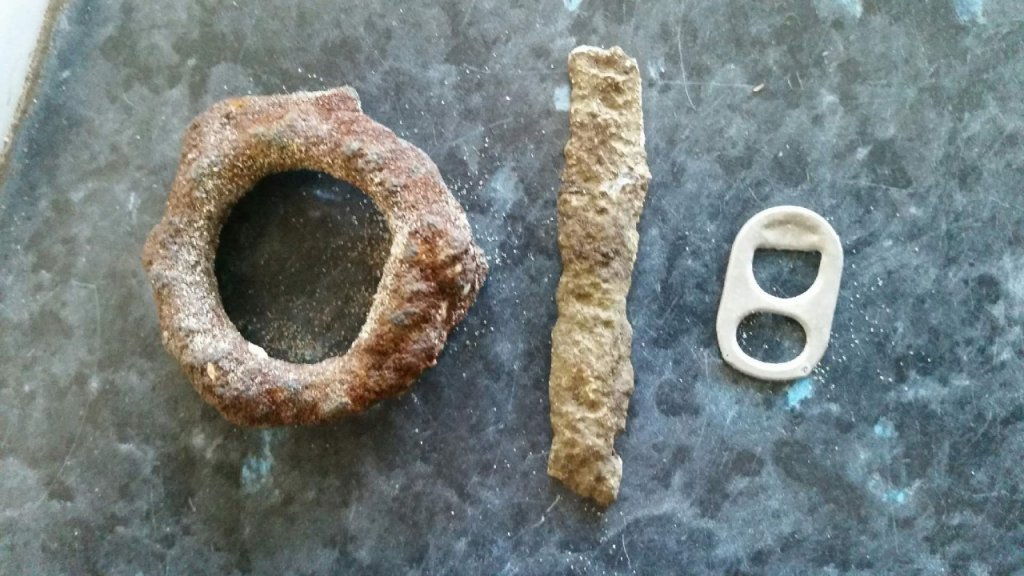well i finally got out today on an early port site dating from the 1850s to 1890s. Iam just learning how to use the machine and after 5 minutes got my first signal after digging around 25 centimeters down out pop a boags ring pull, now i learnt how deep it can go and not to dig id 14. Lets hope for more finds in the future i think i need to learn to pinpoint better
You are using an out of date browser. It may not display this or other websites correctly.
You should upgrade or use an alternative browser.
You should upgrade or use an alternative browser.
Indi Equinox 800 finds
- Thread starter indi
- Start date

Help Support Prospecting Australia:
This site may earn a commission from merchant affiliate
links, including eBay, Amazon, and others.
G
Guest
indi, get used to the ring pulls & bottle tops. Remember to dig anything with a steady consistent signal.
Enjoy learning the machine.
Enjoy learning the machine.
You got your equinox  resent: Don't worry, I'm still digging plenty of ringpulls and sinkers with mine, there's plenty of good targets out there that sound and ID exactly the same. In fact I think I got a little gold ring that came up as a 14, thought that it was a ringpull till it popped out of the sand.
resent: Don't worry, I'm still digging plenty of ringpulls and sinkers with mine, there's plenty of good targets out there that sound and ID exactly the same. In fact I think I got a little gold ring that came up as a 14, thought that it was a ringpull till it popped out of the sand.
Dig 14's unless there are hundreds of them, good rings will be 10 and up. Though yeah if I'm getting heaps of 14's in a small area I usually just leave them.
The pinpoint function on the Nox is very accurate when you get the hang of it.
The pinpoint function on the Nox is very accurate when you get the hang of it.
Just dig it all, unless you are going to make a huge mess because it is too deep or in a manicured lawn.
Have had Kato dismiss tones, and I dug them with my ACE 250 to pull coins and a ring in same hole.

Have had Kato dismiss tones, and I dug them with my ACE 250 to pull coins and a ring in same hole.
That hole produced a triple bonanza, a Penny, a 2c and a silver ring, all in a 4 inch wide shallow dig !
Ya just never know.

Ya just never know.
Second time out today spent an hour on a local beach, thought the base of the can was something nice while pulling it out of the sand, i have no idea what the wire thing is, as yet no coins and a lot of noise. I select the beach setting did the noise cancelling is there a way to ground balance too doesnt seem to be running smoothly


user 14190
Too old to care anyway.
- Joined
- Dec 15, 2018
- Messages
- 837
- Reaction score
- 3,625
I think the wire thingy is for holding a hook setup out from the main line, would have to use a wire trace though I think as it may abrade the main line unless very heavy nylon was used.
Graham
Graham
Reduce your sensitivity  erfect:
erfect:
Pieces-Of-Eight
Steve
The wire is called a paternoster arm or boom, can be tied with mono or clipped wire traces if going for leather jacket or other sharp tooth fish.
Pieces-Of-Eight said:The wire is called a paternoster arm or boom, can be tied with mono or clipped wire traces if going for leather jacket or other sharp tooth fish.
I likes eating Leather Jackets, unfortunately they likes eating my hooks more ... bugga
Sounds a bit like emi, was there any power lines nearby. The poles with the transformer boxes on are the worst. To ground balance go to the second setting from the left then hold the tick/cross button down and pump the coil up and down till the numbers stop changing. Beach mode 2 is easier to ground balance than beach mode 1 but less sensitive.
Ok finds over the last two days about 3 hours worth of detecting the lead strip came from an 1860s mills site but the detector was noisy and a lot of ghost signals. Today the big metal ring gave off a nice signal and id has 24 is it normal for ferrous items to Id that high. Also would a mobile effect the detector from working. Hopefully drought would break soon


- Joined
- Feb 6, 2018
- Messages
- 426
- Reaction score
- 2,874
Yep and yep, any ring-shaped iron has a good chance of fooling the detector and giving a high ID, and phones definitely can interfere with the detector. My Equinox 600 sounds like a chook laying an egg if I try and send a picture on my phone near it! It's usually not an issue most of the time for me though. Don't think anyone's been able to solve the iron ring falsing issue in any detector yet to my knowledge. You'll break your drought soon enough I reckon, if you're digging stuff like that lead and pull tab.
Yeah,I always leave my phone in the car or turn it off. And big lumps of rusty crap can come up as high numbers but usually if you hit the all metal (horseshoe) button they will jump from positive to negative as you swing over them.
Goldpick
Chris Johnson
Large iron will create "wrap around" effect where it will change from low tone to a very high tone/ ID number, more than often higher than what most large silvers coins would come in at (97,98,99 for me on 0-99 scale). If you run some iron audio you should hear some initial low toning as the coil approaches the iron target, before it quickly jumps to a high tone, so that can be a bit of a giveaway. If using some iron discrimination, all you might hear is the high toning and none of the initial low iron tone, so sometimes too much discrimination might only provide part of the picture on what is happening below the ground.
Iron can sound obnoxiously loud compared to say a more mellow tone of a coin target, same when pinpointing the audio may show a target with a wider cross section on the iron compared to that of a coin. If you pinpoint a suspect target and then dig a plug and find the target has moved, it may also be iron. It is just one of those things that you eventually get used to, more so when using the audio to decipher between a good/bad target vs relying on target ID's.
Digging iron isn't always a bad thing as there are plenty of interesting iron relics to be found, not to mention to help unmask good targets by removing iron from the equation. Iron is also an excellent indication of previous habitation, I often follow the iron trail to locate older areas of interest.
Iron can sound obnoxiously loud compared to say a more mellow tone of a coin target, same when pinpointing the audio may show a target with a wider cross section on the iron compared to that of a coin. If you pinpoint a suspect target and then dig a plug and find the target has moved, it may also be iron. It is just one of those things that you eventually get used to, more so when using the audio to decipher between a good/bad target vs relying on target ID's.
Digging iron isn't always a bad thing as there are plenty of interesting iron relics to be found, not to mention to help unmask good targets by removing iron from the equation. Iron is also an excellent indication of previous habitation, I often follow the iron trail to locate older areas of interest.
do not snob signals till your ears can reliably distinguish the tones , they may make the same number id , BUT the tone WILL be different !! one secret that will become very obvious with practice.
so dont worry about playing with settings you don't at present understand !! turn it on , park1 , all tones (50 from memory) and dig em all till your ears are up to speed.
most important , dig the smallest hole possible to retrieve and fill it/replug it the best you can , in other words , tread lightly !
so dont worry about playing with settings you don't at present understand !! turn it on , park1 , all tones (50 from memory) and dig em all till your ears are up to speed.
most important , dig the smallest hole possible to retrieve and fill it/replug it the best you can , in other words , tread lightly !
Similar threads
- Replies
- 6
- Views
- 3K
- Replies
- 97
- Views
- 23K
- Replies
- 19
- Views
- 3K


